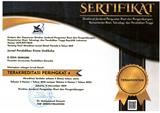CHEMICAL BONDING DIAGNOSTIC TOOL (CBDT): INSTRUMEN EVALUASI PEMAHAMAN KONSEPTUAL MAHASISWA BERKONTEKS LAHAN BASAH
DOI:
https://doi.org/10.23887/jjpk.v6i1.39820Keywords:
pemahaman konseptual, instrumen evaluasi, Chemical Bonding Diagnostic Tool (CBDT), lahan basahAbstract
Pemahaman konseptual yang benar dari peserta didik merupakan tujuan utama dalam setiap pembelajaran kimia, terutama pada materi ikatan kimia. Oleh karena itu, perlu adanya instrumen evaluasi untuk menganalisis sejauh mana pemahaman konseptual yang dimiliki peserta didik. Penelitian berikut berupa pengembangan instrumen evaluasi bernama Chemical Bonding Diagnostic Tool (CBDT) yang berkonteks lahan basah. Tujuan dari penelitian adalah menghasilkan suatu instrumen evaluasi yang valid dan reliabel, serta dapat memperkenalkan tentang pengertian lahan basah. Tahapan metode penelitian meliputi: (1) Peninjauan pustaka; (2) Pengembangan butir soal; (3) Uji validitas konstruk; (4) Revisi instrumen evaluasi; (5) Uji coba instrumen evaluasi; dan (6) Analisis butir soal dan instrumen evaluasi. Melalui penelitian yang dilakukan terhadap sampel 238 orang mahasiswa di enam perguruan tinggi negeri di Indonesia, diperoleh hasil berupa instrumen evaluasi yang sangat valid dan reliabel. Berdasarkan hasil tersebut, maka instrumen evaluasi CBDT dapat digeneralisasikan pada pembelajaran ikatan kimia di Indonesia.References
Arikunto, S. (2013). Dasar-dasar Evaluasi Pendidikan (2nd ed.). Bumi Aksara.
Awan, A. S., & Khan, T. M. (2013). Investigating Pakistani Students’ Alternative Ideas Regarding the Concept of Chemical Bonding. Bulletin of Education and Research, 35(1), 17–29.
Badie, F. (2016). Towards concept understanding relying on conceptualisation in constructivist learning. Proceedings of the 13th International Conference on Cognition and Exploratory Learning in the Digital Age, CELDA 2016, 292–296.
Bakti, I., & Analita, R. N. (2020). Analysis of Undergraduate Students’ Conceptual Consistency on Chemical Kinetics Using Four–Tier Chemistry Concept Inventory. Atlantis Press, 108–117. https://doi.org/10.2991/assehr.k.200711.019
Chang, R. (2010). General Chemistry: The Essential Concepts (10th ed.). McGraw-Hill.
Chhabra, M., & Baveja, B. (2012). Exploring Minds: Alternative Conceptions in Science. Procedia - Social and Behavioral Sciences, 55, 1069–1078. https://doi.org/10.1016/j.sbspro.2012.09.599
Effendy. (2010). Ikatan Ionik dan Cacat-cacat pada Kristal Ionik (2nd ed.). Bayumedia.
Effendy. (2017). Molekul, Struktur, dan Sifat-sifatnya (1st ed.). Indonesian Academic Publishing.
Gilbert, J. K., & Watts, D. M. (1983). Concepts, misconceptions and alternative conceptions: Changing perspectives in science education. Studies in Science Education, 10(1), 61–98. https://doi.org/10.1080/03057268308559905
Habiddin, & Page, E. M. (2019). Development and validation of a four-tier diagnostic instrument for chemical kinetics (FTDICK). Indonesian Journal of Chemistry, 19(3), 720–736. https://doi.org/10.22146/ijc.39218
Haruna, A., & Nahadi. (2021). Menjelajahi Hubungan Level Argumentasi Dengan Ikatan Kimia. Jurnal Inovasi Pendidikan Kimia, 15(1), 2686–2694.
Ilmah, M., Muntholib, M., & Yahmin, Y. (2020). Analysis of chemistry teachers’ covalent bond conceptual understanding through diagnostic interview technique. J-PEK (Jurnal Pembelajaran Kimia), 5(2), 108–115. https://doi.org/10.17977/um026v5i22020p108
Kaltakci-Gurel, D., Eryilmaz, A., & McDermott, L. C. (2017). Development and application of a four-tier test to assess pre-service physics teachers’ misconceptions about geometrical optics. Research in Science and Technological Education, 35(2), 238–260.
Khoirunnisa, F., & Sabekti, A. W. (2020). Profil Keterampilan Berpikir Kritis Siswa Pada Materi Ikatan Kimia. Jurnal Pendidikan Kimia Indoensia, 4(1), 26–31. https://ejournal.undiksha.ac.id/index.php/JPK/article/view/25635
Laliyo, L. A. R., Hamdi, S., Pikoli, M., Abdullah, R., & Panigoro, C. (2021). Implementation of four-tier multiple-choice instruments based on the partial credit model in evaluating students’ learning progress. European Journal of Educational Research, 10(2), 825–840. https://doi.org/10.12973/EU-JER.10.2.825
Leonard, M. J., Kalinowski, S. T., & Andrews, T. C. (2014). Misconceptions yesterday, today, and tomorrow. CBE Life Sciences Education, 13(2), 179–186. https://doi.org/10.1187/cbe.13-12-0244
Luxford, C. J., & Bretz, S. L. (2013). Moving beyond definitions: What student-generated models reveal about their understanding of covalent bonding and ionic bonding. Chemistry Education Research and Practice, 14(2), 214–222. https://doi.org/10.1039/c3rp20154f
Luxford, C. J., & Bretz, S. L. (2014). Development of the bonding representations inventory to identify student misconceptions about covalent and ionic bonding representations. Journal of Chemical Education, 91(3), 312–320. https://doi.org/10.1021/ed400700q
Maskiewicz, A. C., & Lineback, J. E. (2013). Misconceptions are “so yesterday!” CBE Life Sciences Education, 12(3), 352–356. https://doi.org/10.1187/cbe.13-01-0014
McMurry, J. E., & Fay, R. C. (2012). Chemistry (6th ed.). Pearson Prentice Hall.
Mills, S. (2016). Conceptual Understanding: A Concept Analysis. The Qualitative Report, 21(3), 546–557.
Nahum, T. L., Mamlok-Naaman, R., Hofstein, A., & Taber, K. S. (2010). Teaching and learning the concept of chemical bonding. Studies in Science Education, 46(2), 179–207. https://doi.org/10.1080/03057267.2010.504548
Özmen, H. (2004). Some Student Misconceptions in Chemistry: A Literature Review of Chemical Bonding. Journal of Science Education and Technology, 13(2), 147–159. https://doi.org/10.1023/b:jost.0000031255.92943.6d
Prodjosantoso, A. K., Hertina, A. M., & Irwanto. (2019). The misconception diagnosis on ionic and covalent bonds concepts with three tier diagnostic test. International Journal of Instruction, 12(1), 1477–1488.
Safitri, A. F., Widarti, H. R., & Sukarianingsih, D. (2018). Identifikasi Pemahaman Konsep Ikatan Kimia. J-PEK (Jurnal Pembelajaran Kimia), 3(1), 41–50. https://doi.org/10.17977/um026v3i12018p041
Sands, D. (2014). Concepts and conceptual understanding: What are we talking about? New Directions in the Teaching of Physical Sciences, 10(10), 7–11. https://doi.org/10.29311/ndtps.v0i10.510
Seidel, S., & Budke, A. (2019). “A border is a Ban” - Students’ conceptual understanding and experiences of Europe’s borders and boundaries. Review of International Geographical Education Online, 9(1), 82–101. https://doi.org/10.33403/rigeo.573476
Sugiyono. (2017). Statistika untuk Penelitian. Alfabeta.
Taber, K. S., Tsaparlis, G., & Nakiboǧlu, C. (2012). Student Conceptions of Ionic Bonding: Patterns of thinking across three European contexts. International Journal of Science Education, 34(18), 2843–2873. https://doi.org/10.1080/09500693.2012.656150
Vrabec, M., & Prokša, M. (2016). Identifying Misconceptions Related to Chemical Bonding Concepts in the Slovak School System Using the Bonding Representations Inventory as a Diagnostic Tool. Journal of Chemical Education, 93(8), 1364–1370. https://doi.org/10.1021/acs.jchemed.5b00953
Wahdan, W. Z., Sulistina, O., & Sukarianingsih, D. (2017). Analisis Kemampuan Berargumentasi Ilmiah Materi Ikatan Kimia Peserta Didik Sma, Man, Dan Perguruan Tinggi Tingkat I. J-PEK (Jurnal Pembelajaran Kimia), 2(2), 30–40. https://doi.org/10.17977/um026v2i22017p030
Yan, Y. K., & Subramaniam, R. (2018). Using a multi-tier diagnostic test to explore the nature of students’ alternative conceptions on reaction kinetics. Chemistry Education Research and Practice, 19(1), 213–226. https://doi.org/10.1039/C7RP00143F
Yayasan Lahan Basah (YLBA). (n.d.). Wetlands International. https://indonesia.wetlands.org/id/
Published
Issue
Section
License

Jurnal Pendidikan Kimia Undiksha is licensed under a Creative Commons Attribution-ShareAlike 4.0 International License.







